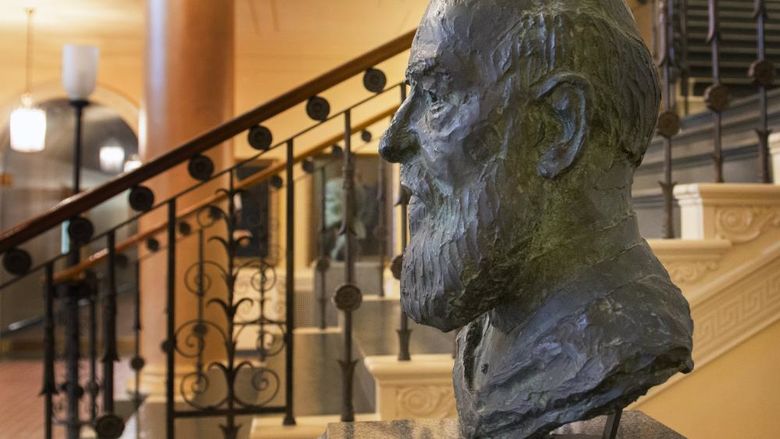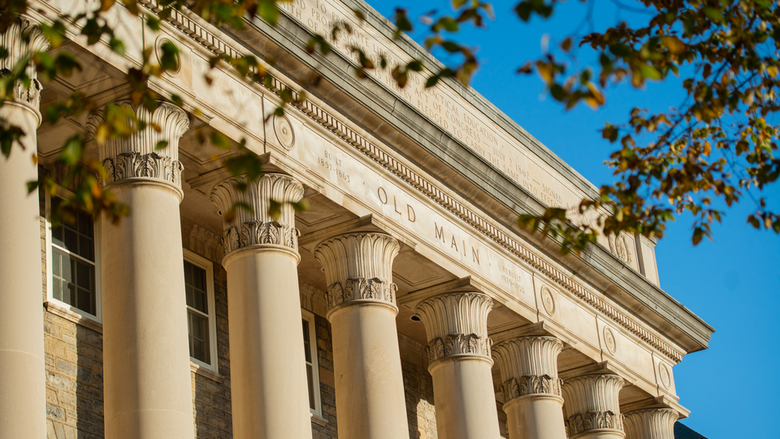
Assistant Professor of Engineering Mesude Bayrakci-Boz and student Paul Kramer work together on a model wind turbine kit in the engineering lab at Penn State Hazleton.
HAZLETON, Pa. — With the aim of enhancing the learning experience in the bachelor of science in engineering with the alternative energy and power generation track degree program, Penn State Hazleton secured model wind and hydropower turbine kits that provided students with a new dimension of interactivity over the last academic year.
Purchased through a Teaching Transformation and Innovation Grant from Penn State's Schreyer Institute for Teaching Excellence, the model wind and hydropower turbine kits offered an authentic, hands-on experience, allowing students to construct, operate and analyze a miniature version of a functioning turbine.
Students were able to measure and evaluate various performance parameters, including power output, energy production and turbine efficiency, while also learning collaboration and teamwork.
Assistant Professor of Engineering Mesude Bayrakci-Boz received the Teaching Transformation and Innovation Grant in 2022 and implemented the models into project-based assignments for her Wind Energy and Hydropower System class during the fall 2022 and spring 2023 semesters.
Bayrakci-Boz said she wanted to give students a physical learning tool as opposed to displaying 3D images of a turbine on a computer screen. They quickly benefited from being able to visualize the working mechanism of hydropower and wind energy principles from start to finish, she said.
“It really helped them to understand the topic and it was fun at the same time,” she said.
In addition, the experiences gave students a preview of what they can expect working in the engineering industry after graduation.
“I’m very much fan of learning by doing,” Bayrakci-Boz said. “I believe it is very important that we are giving students a chance to use their knowledge and skill for real world problem solving to ensure that they are ready for the industry after they graduate, or if they pursue graduate school, they may be working on these kinds of interactive labs."
Penn State Hazleton Chancellor Elizabeth J. Wright said Bayrakci-Boz's efforts are in line with the campus’ overall mission of putting students in the best possible position to excel in their careers after graduation.
“Providing a modern, hands-on resource to enhance the classroom experience is just the latest example of how our faculty strives to empower students to apply their knowledge in real-world scenarios that build their learning foundation and prepare them to enter the workforce,” Wright said.
The Alternative Energy and Power Generation program's goal is to create graduates who will have the background, knowledge and skills necessary to be successful in the contemporary power generation sector and have the ability to lead the industry toward a more environmentally friendly goal, using wind, hybrid and electric alternative energy systems.
Paul Kramer, a spring 2023 graduate of Penn State Hazleton with a bachelor of science degree in engineering, used the kits during his senior year.
“We had the opportunity to test and experiment with the blade designs, gearing, lubricants and even system losses in an attempt to find the magnitude of difference each design decision produced and could compare the results against textbook assumptions and figures,” Kramer said.
The kits have uses beyond the engineering curriculum, too, Bayrakci-Boz said. She has used them as interactive activities during accepted student programs, visits from prospective and dually enrolled students and other campus events. The kits can also be used for experiments by the campus Science and Engineering Club.





